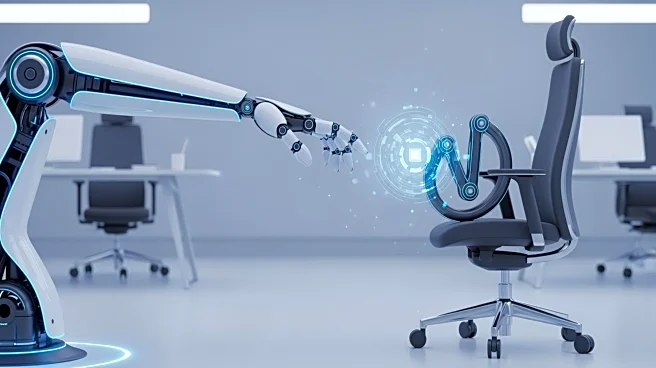What's Happening?
Recent research investigates the dual impact of enterprise digital transformation on employees, using the Job Demands-Resources (JD-R) model. Digital technologies can enhance job control and adaptive performance
by providing employees with tools for efficient task management and collaboration. However, they also increase job demands, leading to perceived status threats and anxiety. The study highlights the importance of goal orientation in moderating these effects, with learning-oriented employees benefiting more from digital affordances than performance-oriented ones.
Why It's Important?
Understanding the dual impact of digital transformation is crucial for organizations aiming to leverage technology while maintaining employee wellbeing. The JD-R model provides a framework for balancing job demands and resources, ensuring that digital technologies enhance rather than hinder employee performance. By recognizing the role of goal orientation, organizations can tailor their digital strategies to support employee growth and mitigate negative outcomes such as burnout and anxiety.
What's Next?
Organizations are encouraged to focus on enhancing job resources and reducing job demands to optimize the benefits of digital transformation. This includes providing training and support to help employees adapt to new technologies and fostering a culture of continuous learning. By aligning digital strategies with employee needs, organizations can improve adaptive performance and reduce perceived status threats, ensuring a positive impact on employee wellbeing.
Beyond the Headlines
The study underscores the complexity of digital transformation, highlighting the need for a nuanced approach to technology integration. As digital workplaces become more prevalent, organizations must consider the psychological and behavioral impacts on employees, ensuring that technology serves as a tool for empowerment rather than a source of stress.











